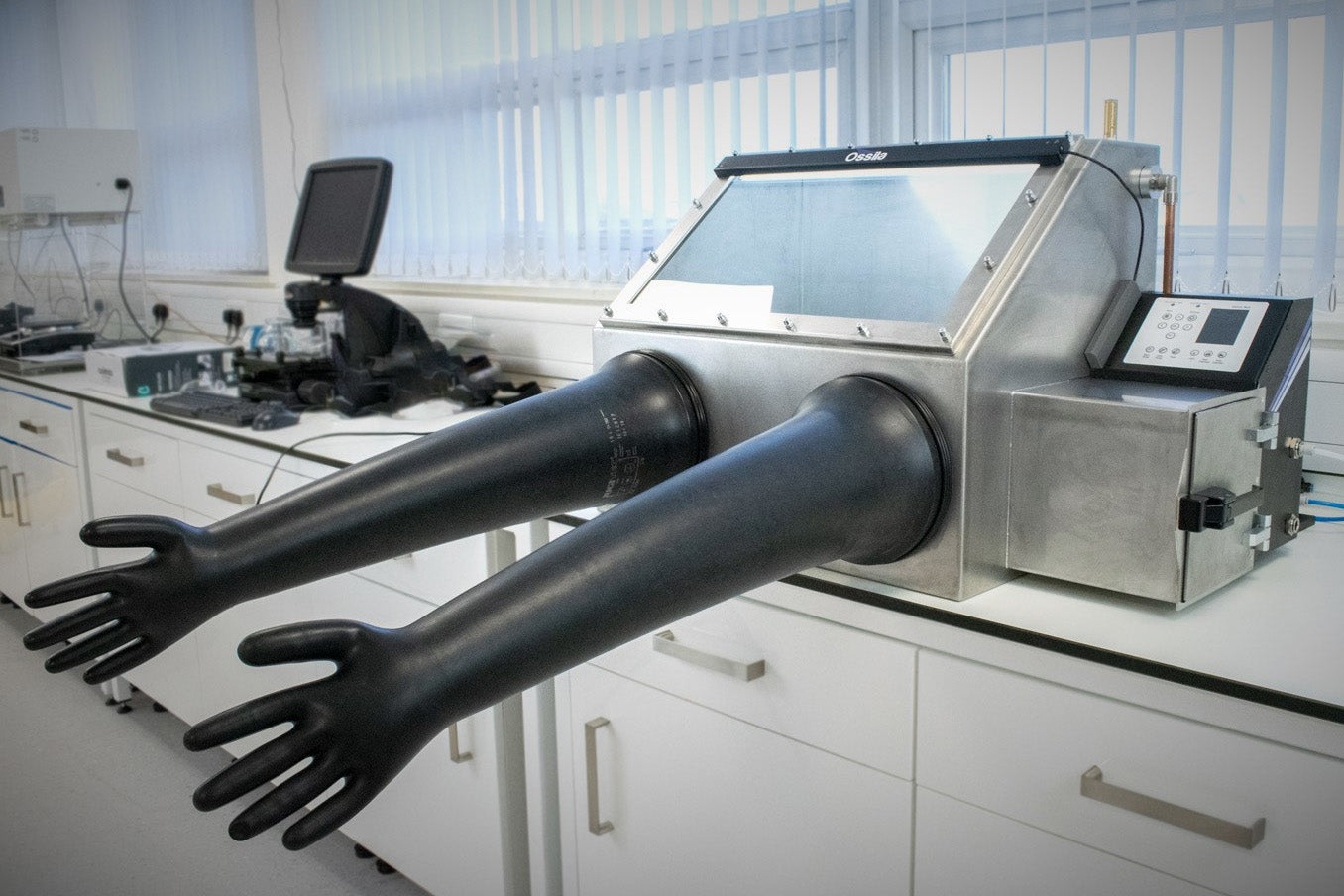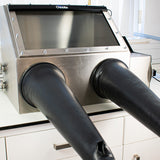Laminar Flow Hood vs Glove Box

A laminar flow hood and a glove box both provide controlled environments to be used in laboratory settings, but they have distinct differences in terms of their features and functions within the laboratory. While laminar flow hoods are specialized for reducing contamination and maintaining cleanliness, glove boxes provide isolation and a controlled atmosphere, making them suitable for handling hazardous or air sensitive compounds.
Which one you need depends on the specific requirements and nature of your materials or experiments.
- Laminar flow hoods are not designed to contain hazardous or air-sensitive materials; their main purpose is to provide a contaminant-free work area.
- Opposingly, gloves boxes are designed to contain hazardous materials, air-sensitive substances, or samples that require isolation from the external environment. However, they do not provide a sterile environment.
Purpose and Protection
Our laminar flow hood is interchageable and can be set up in two different configurations: vertical and horizontal. Laminar flow hoods are designed to provide a contaminant-free working environments for handling sensitive samples or conducting procedures which require a clean workspace. They do so by creating a unidirectional flow of filtered air that blows contaminants away from the working area, protecting the sample from external contaminants.
On the contrary, a glove box is primarily used to create and establish an isolated, sealed and controlled atmosphere. It provides an oxygen-free or low-humidity environment, this allows for the manipulation of air-sensitive materials or the handling of hazardous substances.
Airflow and Contamination Control
Laminar flow hoods use high-efficiency particulate air (HEPA) filters to create a laminar, unidirectional airflow. The purpose of this airflow is to prevent the introduction of contaminants and maintain a sterile environment for the samples or procedures being conducted inside.
Alternatively, glove boxes are designed to maintain a controlled internal atmosphere, typically by using an inert gas system. They have separate compartments with gloves attached, allowing the operator to handle materials without being exposed. They do not provide a sterile environment but inert air can be circulated through the system using purging cycles. This can remove some physical contaminants.

Access and Handling
In terms of access and handling, the laminar flow hood is useful for providing easy access from the front, and operators can comfortably work without barriers. However, if you are conducting a sterile procedure you will need to ensure you sterilize any materials (including your hands) before bringing them into the workspace. These hoods are primarily used for short-term procedures or manipulations that require a clean workspace.
Glove boxes are enclosed systems that can only be accessed with gloves. Whilst this can limit mobility inside the chamber, this system offers maximum sample and user protection.

Laminar Flow Hood

Applications
Laminar flow hoods are an extremely useful tool to ensure a clean working environment. Helping to provide a contaminant-free environment is crucial to preventing contamination and ensuring the integrity of the samples. They can also be utilized in medical and clinical laboratories. These include procedures such as sample preparation, genetic testing and handling of sensitive materials.
Laminar flow hoods are commonly used in:
- Microbiology
- Cell culture
- Pharmaceutical research
- Preparing Agar plates
- They can be used in processes such as PCR
- Culturing bacteria, fungi or viruses.
Glove boxes are commonly used to handle air-sensitive materials such as reactive chemicals, hygroscopic substances, or materials prone to oxidation. The glove box does this by providing an oxygen-free, moisture-controlled environment to protect these sensitive materials from potential degradation or negative reaction. They can also be used in nuclear research and radiopharmaceutical production facilities for handling radioactive isotopes, as well as the manipulation of these. They aid in providing a shielded and controlled environment which aims to protect the operator from radiation exposure. However, these systems require extensive safety measures.
In addition to this, glove boxes are employed for the long-term storage and ageing of sensitive materials, these include; polymers, active pharmaceutical ingredients (APIs) or other chemical compounds.
Glove boxes are mainly utilized in:
- Materials research
- Electronics manufacturing
- Perovskite and organic electronic device fabrication
- Materials storage
- Experiments using air-sensitive or hazardous materials
Glove Box

Learn More
 Solar Cell Encapsulation in a Glove Box
Solar Cell Encapsulation in a Glove Box
When working with air sensitive compounds, it is vital that to protect your materials before removing them from inert atmospheres (like a glove box). One way to do this is to encapsulate your devices before exposing them to ambient conditions.
Read more... How to Choose a Laboratory Glove Box
How to Choose a Laboratory Glove Box
When buying a laboratory glove box, it is important that you choose the most suitable system for your samples, experimental needs, budget, and lab environment.
Read more...